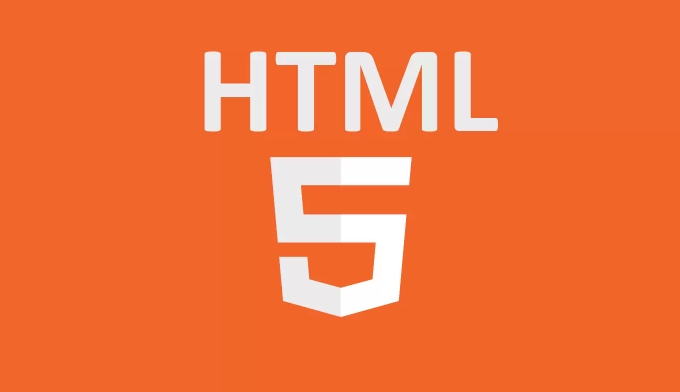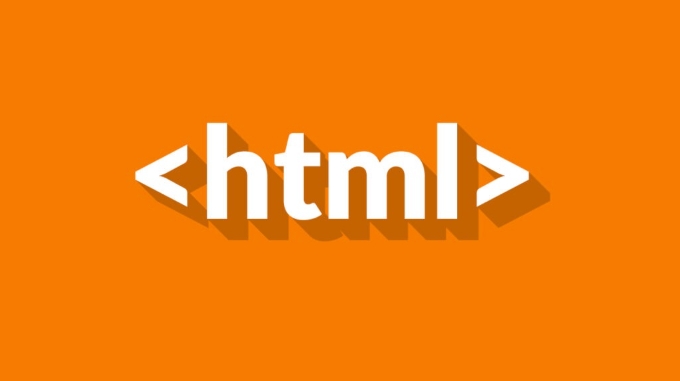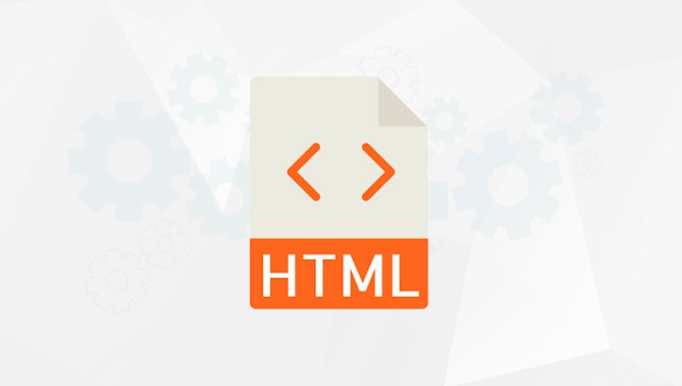label is a key but often overlooked element in web forms. When writing labels, you need to pay attention to the following points: 1. Each input box should have a corresponding label to avoid relying solely on placeholder. It can be handled using aria-label or hidden method; 2. label must be correctly bound to input, and it is recommended to use the for attribute to associate id; 3. label text should be clear, accurate, keep the format and the term consistent, and avoid blur or abbreviation; 4. In special cases, visually-hidden class or aria-label can be used to ensure barrier-free access, but label cannot be omitted. These details can significantly improve user experience, accessibility and SEO results.

Form tags (labels) look like small things, but they are of great effect in web development. If used well, it can improve accessibility, user experience, and even affect SEO; if used poorly, users may not know what to fill in. Therefore, there are actually many details to pay attention to when writing a label for HTML forms.

1. Each input box should have a corresponding label
This is the most basic and important principle. In order to make the interface simple, some people directly treat placeholder as a prompt text, but this is not friendly to screen readers and can easily confuse users.
- Label is not only for users with normal vision, but also the key to assistive technology in identifying input content.
- If you really don't want to display label text, you can use
aria-labelor hidden label, but don't just omit it.
For example:

<label for="email">Email address</label> <input type="email" id="email" name="email">
Or the writing method of hidden label (suitable for scenes such as icon buttons):
<label for="search" class="visually-hidden">Search</label> <input type="text" id="search" name="search">
2. The label and input must be bound correctly
It is not enough to just write label, it must be "bound" with the corresponding input element. There are two ways:

- Use the
forproperty and make sure its value is equal toidof the corresponding input - Nesting input directly in label tag
The first writing method is recommended, with a clearer structure, especially in complex layouts, which are not prone to errors.
Error demonstration:
<label>Email</label> <input type="email" name="email">
In this way, label and input are not related, and the auxiliary tools cannot know what this input box is used for.
3. Label text should be clear, accurate and consistent
This falls within the UX design category, but it also directly affects the front-end implementation. for example:
- Avoid vague expressions such as “Your info” or “Tell us more”
- Try to use a unified format style, such as all labels are written in title form (Title Case)
FAQ:
- On the same website, some labels are "First Name", while others are "Last Name" (Capture confusion)
- Some form items use abbreviation, such as "DOB" instead of "Date of Birth", which is not very friendly to non-native users.
Suggested practices:
- Write the label in full, don't be lazy
- Keep semantics clear and avoid ambiguity
- Pay attention to the consistency of translation in multilingual projects
4. How to deal with label in special circumstances
Sometimes, I hope the label looks "hidden", such as using placeholder instead, or using only icons. In this case, accessibility must be ensured.
These practices can be considered:
- Use
visually-hiddenclass to hide labels, but reserved for screen readers to read - Add
aria-labelattribute to the icon to explain the purpose - Do not use placeholder instead of label, because placeholder will disappear, and users are prone to forget what they need to fill in.
For example:
<label for="password" class="visually-hidden">Password</label> <input type="password" id="password" name="password" placeholder="Enter password">
Or a search box with icons:
<button type="submit" aria-label="Search">?</button>
Basically that's it. labels look simple, but there are a lot of details, especially when it comes to accessibility. Thinking more when writing can improve the product experience a lot.
The above is the detailed content of Best Practices for HTML Form Labels. For more information, please follow other related articles on the PHP Chinese website!

Hot AI Tools

Undress AI Tool
Undress images for free

Undresser.AI Undress
AI-powered app for creating realistic nude photos

AI Clothes Remover
Online AI tool for removing clothes from photos.

Clothoff.io
AI clothes remover

Video Face Swap
Swap faces in any video effortlessly with our completely free AI face swap tool!

Hot Article

Hot Tools

Notepad++7.3.1
Easy-to-use and free code editor

SublimeText3 Chinese version
Chinese version, very easy to use

Zend Studio 13.0.1
Powerful PHP integrated development environment

Dreamweaver CS6
Visual web development tools

SublimeText3 Mac version
God-level code editing software (SublimeText3)
 Applying Semantic Structure with article, section, and aside in HTML
Jul 05, 2025 am 02:03 AM
Applying Semantic Structure with article, section, and aside in HTML
Jul 05, 2025 am 02:03 AM
The rational use of semantic tags in HTML can improve page structure clarity, accessibility and SEO effects. 1. Used for independent content blocks, such as blog posts or comments, it must be self-contained; 2. Used for classification related content, usually including titles, and is suitable for different modules of the page; 3. Used for auxiliary information related to the main content but not core, such as sidebar recommendations or author profiles. In actual development, labels should be combined and other, avoid excessive nesting, keep the structure simple, and verify the rationality of the structure through developer tools.
 Implementing Clickable Buttons Using the HTML button Element
Jul 07, 2025 am 02:31 AM
Implementing Clickable Buttons Using the HTML button Element
Jul 07, 2025 am 02:31 AM
To use HTML button elements to achieve clickable buttons, you must first master its basic usage and common precautions. 1. Create buttons with tags and define behaviors through type attributes (such as button, submit, reset), which is submitted by default; 2. Add interactive functions through JavaScript, which can be written inline or bind event listeners through ID to improve maintenance; 3. Use CSS to customize styles, including background color, border, rounded corners and hover/active status effects to enhance user experience; 4. Pay attention to common problems: make sure that the disabled attribute is not enabled, JS events are correctly bound, layout occlusion, and use the help of developer tools to troubleshoot exceptions. Master this
 Configuring Document Metadata Within the HTML head Element
Jul 09, 2025 am 02:30 AM
Configuring Document Metadata Within the HTML head Element
Jul 09, 2025 am 02:30 AM
Metadata in HTMLhead is crucial for SEO, social sharing, and browser behavior. 1. Set the page title and description, use and keep it concise and unique; 2. Add OpenGraph and Twitter card information to optimize social sharing effects, pay attention to the image size and use debugging tools to test; 3. Define the character set and viewport settings to ensure multi-language support is adapted to the mobile terminal; 4. Optional tags such as author copyright, robots control and canonical prevent duplicate content should also be configured reasonably.
 Best HTML tutorial for beginners in 2025
Jul 08, 2025 am 12:25 AM
Best HTML tutorial for beginners in 2025
Jul 08, 2025 am 12:25 AM
TolearnHTMLin2025,chooseatutorialthatbalanceshands-onpracticewithmodernstandardsandintegratesCSSandJavaScriptbasics.1.Prioritizehands-onlearningwithstep-by-stepprojectslikebuildingapersonalprofileorbloglayout.2.EnsureitcoversmodernHTMLelementssuchas,
 How to associate captions with images or media using the html figure and figcaption elements?
Jul 07, 2025 am 02:30 AM
How to associate captions with images or media using the html figure and figcaption elements?
Jul 07, 2025 am 02:30 AM
Using HTML sums allows for intuitive and semantic clarity to add caption text to images or media. 1. Used to wrap independent media content, such as pictures, videos or code blocks; 2. It is placed as its explanatory text, and can be located above or below the media; 3. They not only improve the clarity of the page structure, but also enhance accessibility and SEO effect; 4. When using it, you should pay attention to avoid abuse, and apply to content that needs to be emphasized and accompanied by description, rather than ordinary decorative pictures; 5. The alt attribute that cannot be ignored, which is different from figcaption; 6. The figcaption is flexible and can be placed at the top or bottom of the figure as needed. Using these two tags correctly helps to build semantic and easy to understand web content.
 HTML for email templates tutorial
Jul 10, 2025 pm 02:01 PM
HTML for email templates tutorial
Jul 10, 2025 pm 02:01 PM
How to make HTML mail templates with good compatibility? First, you need to build a structure with tables to avoid using div flex or grid layout; secondly, all styles must be inlined and cannot rely on external CSS; then the picture should be added with alt description and use a public URL, and the buttons should be simulated with a table or td with background color; finally, you must test and adjust the details on multiple clients.
 What are the most commonly used global attributes in html?
Jul 10, 2025 am 10:58 AM
What are the most commonly used global attributes in html?
Jul 10, 2025 am 10:58 AM
class, id, style, data-, and title are the most commonly used global attributes in HTML. class is used to specify one or more class names to facilitate style setting and JavaScript operations; id provides unique identifiers for elements, suitable for anchor jumps and JavaScript control; style allows for inline styles to be added, suitable for temporary debugging but not recommended for large-scale use; data-properties are used to store custom data, which is convenient for front-end and back-end interaction; title is used to add mouseover prompts, but its style and behavior are limited by the browser. Reasonable selection of these attributes can improve development efficiency and user experience.
 How to handle forms submission in HTML without a server?
Jul 09, 2025 am 01:14 AM
How to handle forms submission in HTML without a server?
Jul 09, 2025 am 01:14 AM
When there is no backend server, HTML form submission can still be processed through front-end technology or third-party services. Specific methods include: 1. Use JavaScript to intercept form submissions to achieve input verification and user feedback, but the data will not be persisted; 2. Use third-party serverless form services such as Formspree to collect data and provide email notification and redirection functions; 3. Use localStorage to store temporary client data, which is suitable for saving user preferences or managing single-page application status, but is not suitable for long-term storage of sensitive information.






